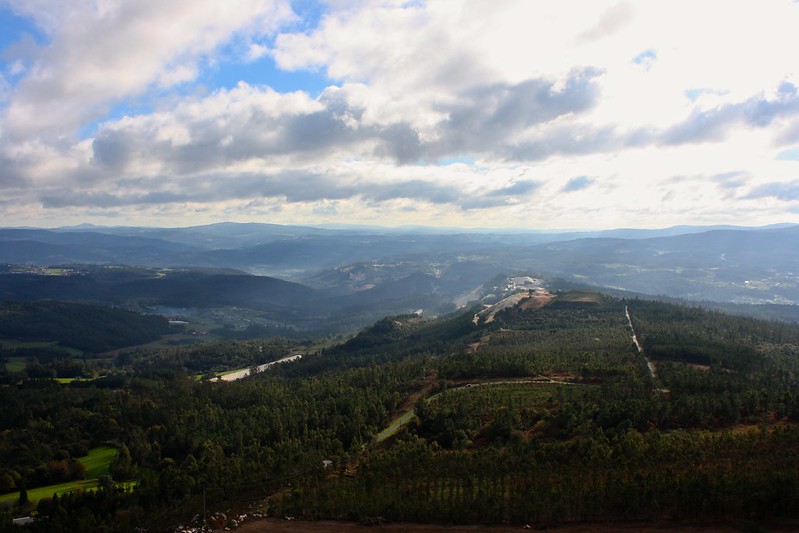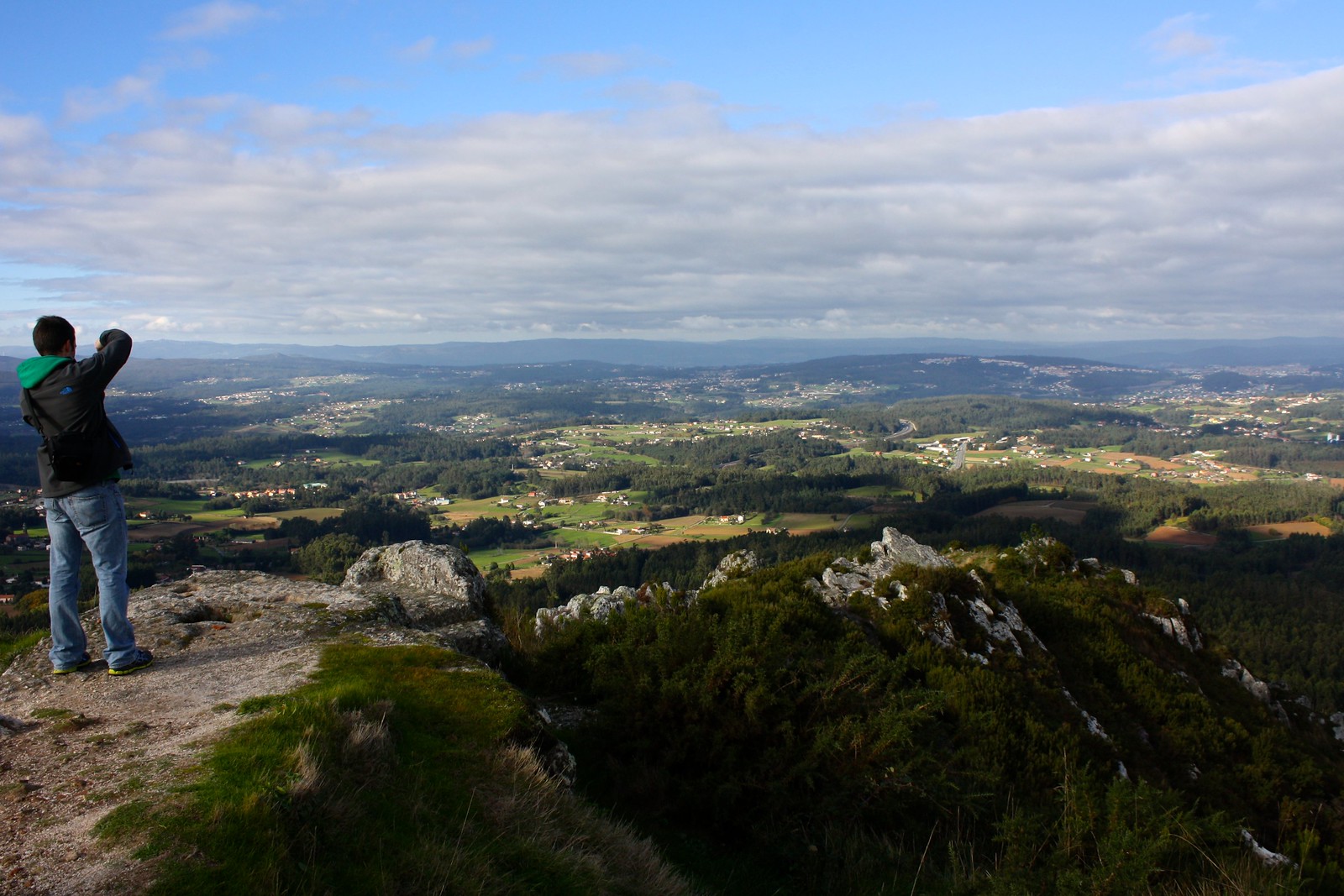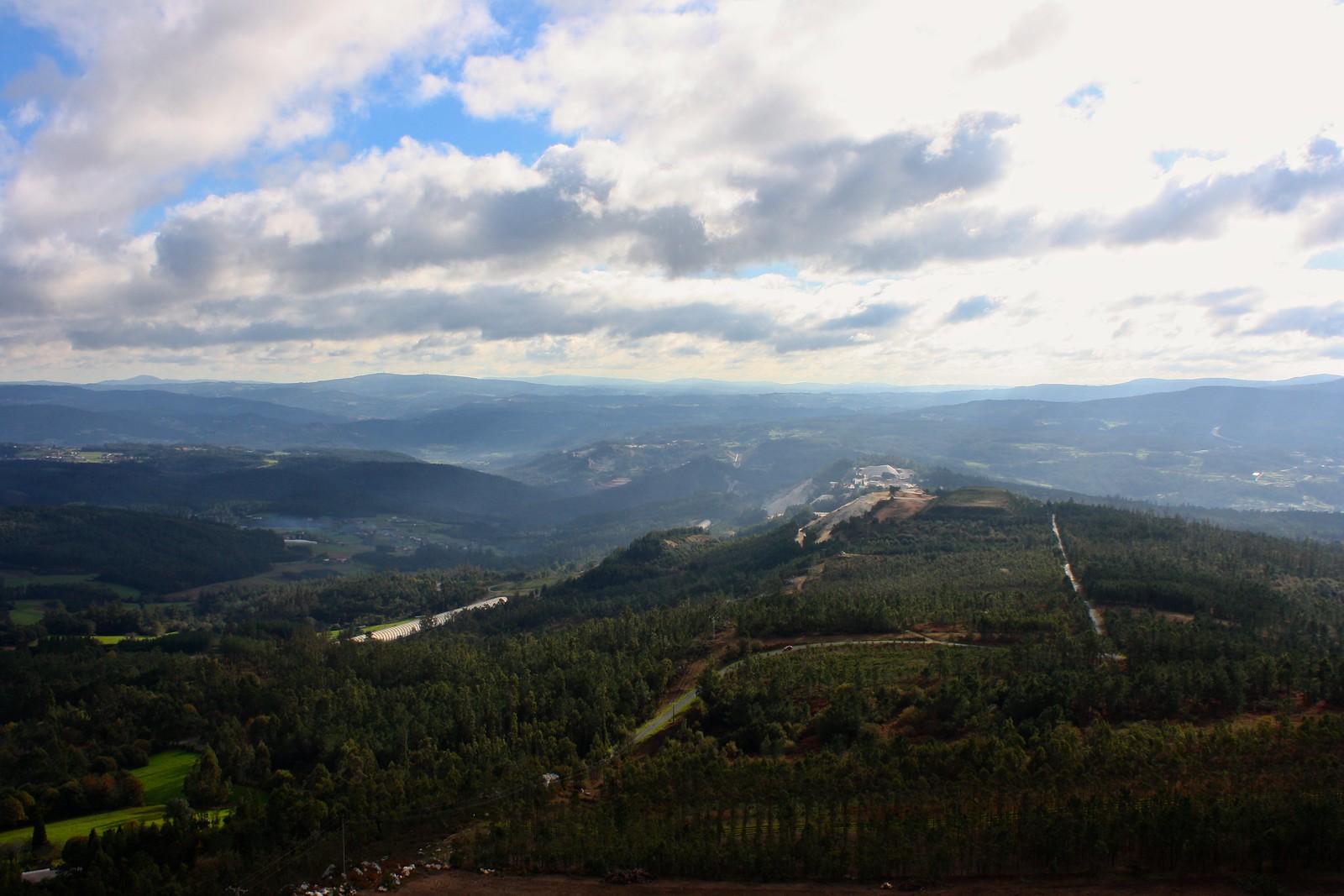Galicia is (in)famous for being rainy; upon explaining to my Andalusian friends and teachers that I would be moving up north last year, they would almost instantly exclaim how much it rains here. However, I’ve been keeping track of the weather, and so far, it really hasn’t been all that bad. In fact, for five whole weeks in November and December, we had, at most, a single day of rain.
During this welcome dry spell, a few American friends in town and I took advantage of the nice weather and made a little daytrip from Santiago de Compostela to hike up a mountain called
Pico Sacro. The name means “Sacred Peak,” but I’ll explain the mystical origins of the title below. Only half an hour outside of town, Pico Sacro rears up and gives a grand panorama of the surrounding areas from its summit.
An easy, rewarding hike
Hiking up the mountain wasn’t a walk in the park, but it wasn’t extremely strenuous, either. Just an hour along rural roads and forest paths brought us up to a small parking area, a nice place to stretch and hydrate before ascending the rugged crest. We passed several shell-emblazoned markers for the
Vía de la Plata, the southeast-to-northwest branch of the
Camino de Santiago, although we didn’t run into any pilgrims since it was the middle of November.
The rocky summit really lets you see Galicia in its entirety: thick pine forests break apart to let bright green fields shine through and bridges carry high-speed trains from Santiago down to
Ourense, far in the distance. Fog and smoke drift between low hills and villages diffuse across the countryside.
Myths and legends
The Apostle St. James, son of Zebedee, ranks highly in the Spanish national mythos and has a minor connection to this mountain. According to legend, in the years after Jesus’ earthly ministry, James crossed the Mediterranean to spread Christianity in Roman Hispania. Back in Jerusalem (and closer to historical fact), he was martyred in Jerusalem in 44 CE. His body, however, was supernaturally transported in a simple boat back to Spain, where it landed in Iria Flavia (Padrón), outside of present-day Santiago de Compostela. There, some of James’s disciples received his body and took it inland to the location of today’s cathedral.
However, to carry his remains, James’ asked the local Queen Lupa for help, requesting a cart and two oxen. Heathen that she was, Lupa directed the disciples to the mountain we now call Pico Sacro—where a hostile dragon and two wild bulls (
toros bravos) awaited them. These menacing creatures had nearly killed them until the disciples made the sign of the cross, which made the dragon perish and tamed the bulls. When they returned to Lupa, the queen and her vassals converted to Christianity. God be praised!
Today, you can peek into the “dragon’s lair” on the mountain by heading to the right once you pass through the narrow crevice that divides the east and west summits—called the
Rúa da Raíña or “Queen’s Street.” Keep walking along the path that skirts the northern side of the eastern summit, and you’ll eventually find a cave entrance that opens up. Don’t pull any funny business, though; I think crawling around in there is technically illegal, and once you get past the initial slope upwards, it drops off in a sheer plunge. But dragons, though!
Where and what to eat
Like any good village in rural Galicia, Lestedo has a handful of places to get some good barbecue pork (
churrasco). My friends and I decided on a no-nonsense diner called
Casa Fachal Parrillada and didn’t regret our decision at all. The smoky ribs and sausages just kept coming out of the in-house grill, and we enjoyed them with french fries, bread, and a simple salad.
Lestedo is locally famous for the cake it produces, the
tarta de Lestedo. A plain cheesecake with a strawberry-based topping went perfectly with a
relaxing cup of
café con leche for dessert. Try it!
How to get there
From the central bus station in Santiago de Compostela, go to the
Castromil ticket office and ask for the next departure for
Lestedo—it shouldn’t cost more than a couple of euros. Go downstairs to the main hall and hop on the blue-and-yellow
Monbus bus (same company, different name), ride for about half an hour (watching the signs carefully), and get off on the side of the highway in Lestedo, a parish of the Boqueixón municipality.
From the bus stop, it’s not hard to find your way—just look up for the mountain and start hiking, generally in a northerly direction (to the left from the highway). There are a couple of signs here and there that will direct you up.
Have you ever gone up Pico Sacro? Are you a fan of mountain hiking or rock climbing? Comment below!









